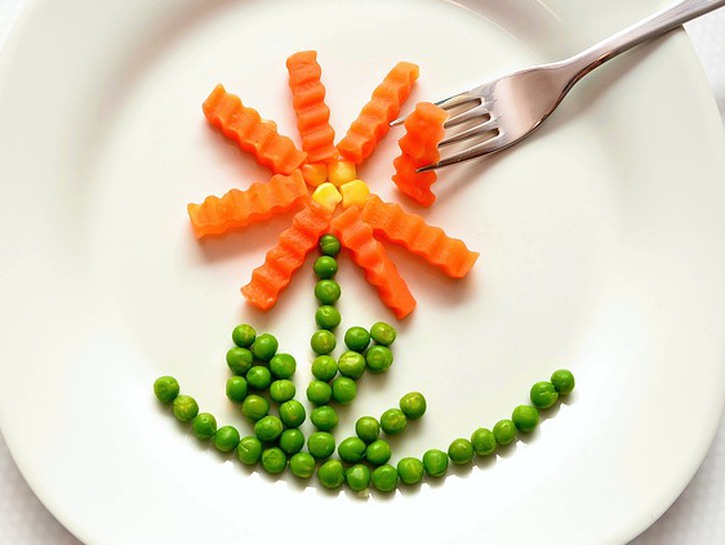Are you a frozen vegetable junkie? Or even just an occasional fan? Either way, we have the guide for you! We’ll break down why to buy frozen veggies, plus provide an overview of the best ways to prep ’em. The end result will surely be delicious and nutritious while remaining budget-conscious. We call that a win-win.
Why Choose Frozen Vegetables?

Not only are frozen vegetables super budget-friendly, they are also quite convenient. On one hand, if your freezer is stocked with frozen veggies, it can save you a trip or two to the grocery store. Plus, some varieties even come pre-chopped (I’m looking at you, spinach). That previously chopped vegetable can be a time-saving gift on busy weeknights. Another great time saver is steamable bags of frozen vegetables; and as an added bonus, you will use fewer dishes in the cooking process since they can heat right in the bag. Additionally, using frozen produce cuts down on food waste, as you can safely consume it for a longer period of time. All the yes!
When To Avoid Frozen Vegetables

As we’ve discussed, frozen veggies are an awesome way to keep your kitchen convenient and budget-conscious. Most of the time these icy ingredients are a great addition to your recipes. However, there are a couple quick notes we want to make to ensure that you’re using them correctly. If possible, buy fresh produce for the short time when it’s in season and use frozen for the rest of the year. Also, if a vegetable is the star of your dish, it’s best to buy it fresh. A simple carrot side dish won’t quite delight with frozen carrots like fresh heirloom carrots from the farmer’s market. Plan your menu and your grocery list accordingly!
The Best Ways To Prepare Frozen Veggies

Now that you know why frozen produce is great and the times to avoid it, let’s explore some common ways to properly prepare these items. Here are seven methods for eating frozen vegetables.
1. Steam
You should NEVER boil frozen vegetables, or they will become a mushy mess. We recommend steaming them for better texture and flavor. Our favorite way is to steam them in a pot with a stovetop steamer. However, if you’re in a pinch, simply microwave them for the same effect. Add a few tablespoons of water to a microwave safe dish and voila, you have an easy way to add healthy veggies to your dish. Nearly all frozen veggies can be prepared via steaming with good results.
2. Crisp
Certain produce items don’t do well with a classic steam and lend themselves better to being breaded and/or fried. Frozen asparagus, Brussels sprouts, broccoli, okra, butternut squash, and cauliflower are some examples of veggies that don’t stand up to steaming. Instead, we recommend adding some texture to avoid the soggy with frying or breading. They can also be used in hotdish or casserole with the same delicious end result.

3. Cold
One way to serve that we sometimes overlook is cold. With just a quick thaw or mini steam, frozen vegetables can be a great addition to a cold dish like salad. Veggies that truly shine with this way of preparation are the bite-sized ones like frozen corn, bell pepper strips, green beans, peas, edamame, and quartered artichoke hearts. All of those would be tasty additions to many recipes.
4. Smash
It’s not just avocado that can be smashed for a delectable end result. Frozen butternut squash and carrots, considered more mushy veggies, can be crafted into hummus or spread on toast. Just do a quick thaw, then experiment with these healthy ingredients. There’s no limit to what you can do!
5. Bake
For breakfast fare especially, baking frozen vegetables right out of the package (no thaw required!) is delicious. Stratas, quiches, and frittatas are just a few of the vehicles from which to enjoy frozen goodness. You can also consider adding frozen ingredients to healthy muffins or protein cookies.

6. Combine
Mixing frozen veggies with other ingredients is a great way to prepare them. Add them to something that is patty-like, such as falafels or meatballs. You can even break down more fibrous vegetables in the food processor after a quick steam. For softer items, simply chop quickly before adding to your recipe. This method is one of our favorites, because it packs extra plant power into every bite!
7. Dip
This is an excellent way for frozen greens to shine, like spinach or kale. Swirl thawed produce into greek yogurt for a great dipping sauce. Mix into sour cream for a cool addition to tacos (with hidden veggies!). You could also bust out the food processor and add greens to pesto. There’s surely a lot of room for creativity with this method.
8. Soup
We saved the best for last, since this is perhaps the easiest way to use frozen ingredients properly. For a blended soup like butternut squash, add the frozen veggies at any time since they don’t need to provide any texture; in fact, their inherent mushiness is a bonus, since it can help smooth the soup. For a non-blended soup, like chicken noodle, add the frozen components near the end of cooking so they don’t turn to mush from too much heat.

So overall, we’ve explored the reasons frozen vegetables are good for your wallet and save you time. Plus, we’ve shared the limited times they aren’t the best to use. Then, we broke down seven amazing and varied ways to prepare frozen veggies for the best possible outcome. We hope you’re all ready to tackle recipes with renewed gusto after reading our guide. Happy cooking!
